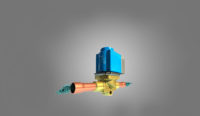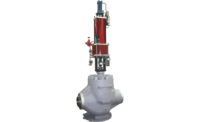BALTIMORE — With the new NovoCon® M, L, and XL digital actuators, Danfoss extends its range of smart actuators combined with pressure independent balancing valves (PICVs) to achieve digital control for hydronic heating and cooling systems. The new digital controls complement the existing NovoCon S for AB-QM™ ranging in sizes ½ to 1¼ inches (DN 10-32).
NovoCon digital controls enable solutions for smart building concepts. As a digital control valve, its high-precision hydronic balancing and control achieves and maintains steady room temperature requirements and design specifications (ΔT). This creates the fundamental basis for balanced comfort in commercial buildings, such as universities, hospitals, and office buildings.
The NovoCon M, NovoCon L, and NovoCon XL are specifically designed to accurately control high-flow rates in common applications, such as hot/chilled water fan coils, variable air volume (VAV), sensible-cooling terminal units, and chillers.
Unique Features
NovoCon’s unique design allows for multiple functions to be performed in one smart solution:
- Accurate flow control - Linear characteristics at different differential pressures;
- Bus actuator – BACnet, MS/TP, or Modbus RTU communication protocols;
- I/O device - Resistance inputs (3x), Analog input (1x), Analog output (1x); and
- Energy manager - Advanced algorithms for monitoring and energy management.
Danfoss NovoCon digital control valves are accessible and adjusted via BACnet or Modbus communication protocols or directly through a communication cable and available software for easy integration and to provide actual system performance data for higher-level building management systems.
The I/O interfaces can be used to connect sensors to measure supply and return temperatures as well as to calculate energy consumption. Additionally, the I/O ports are available for controlling individual devices, such as fans or connecting BMS room temperature controllers.
Danfoss is engineering the smart buildings of tomorrow with NovoCon digital control valves. Not only do they establish system stability with true pressure independence, they also provide the BMS with real-time HVAC data to enable active energy management. Lastly, these innovations offer advantages in remote commissioning, flow setting, flushing, predictive maintenance, and energy allocation. For more information, visit www.danfoss.com.




